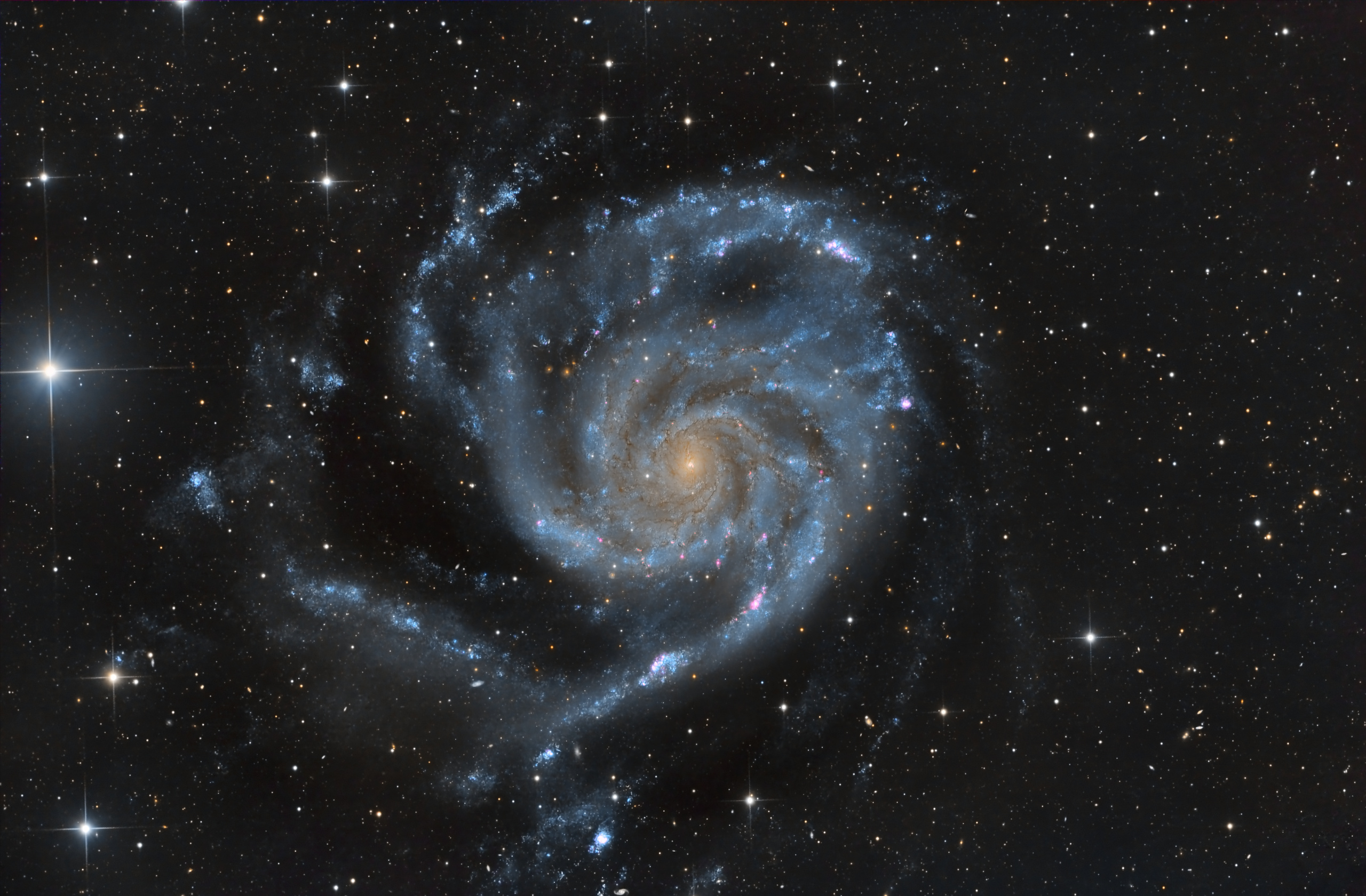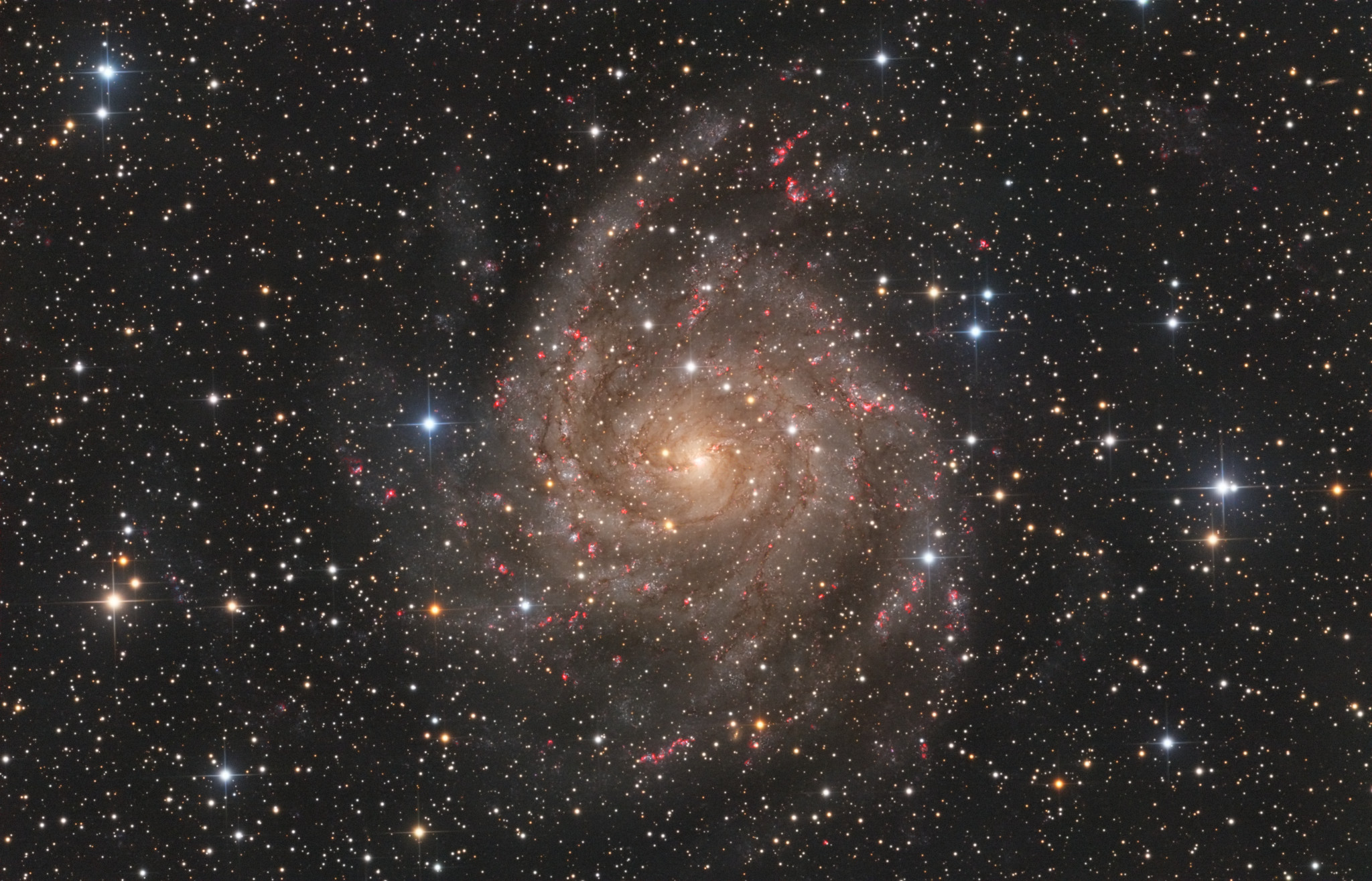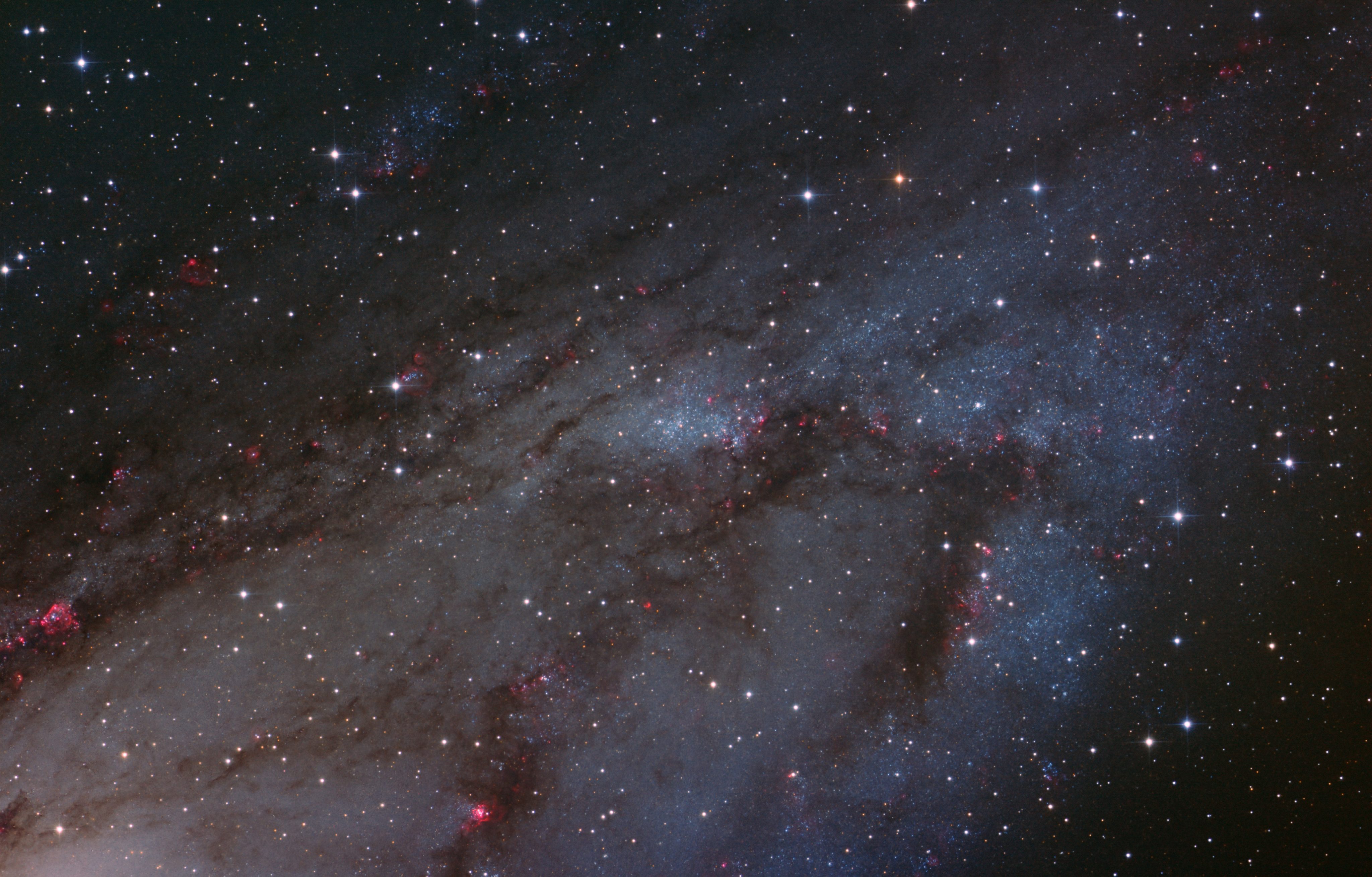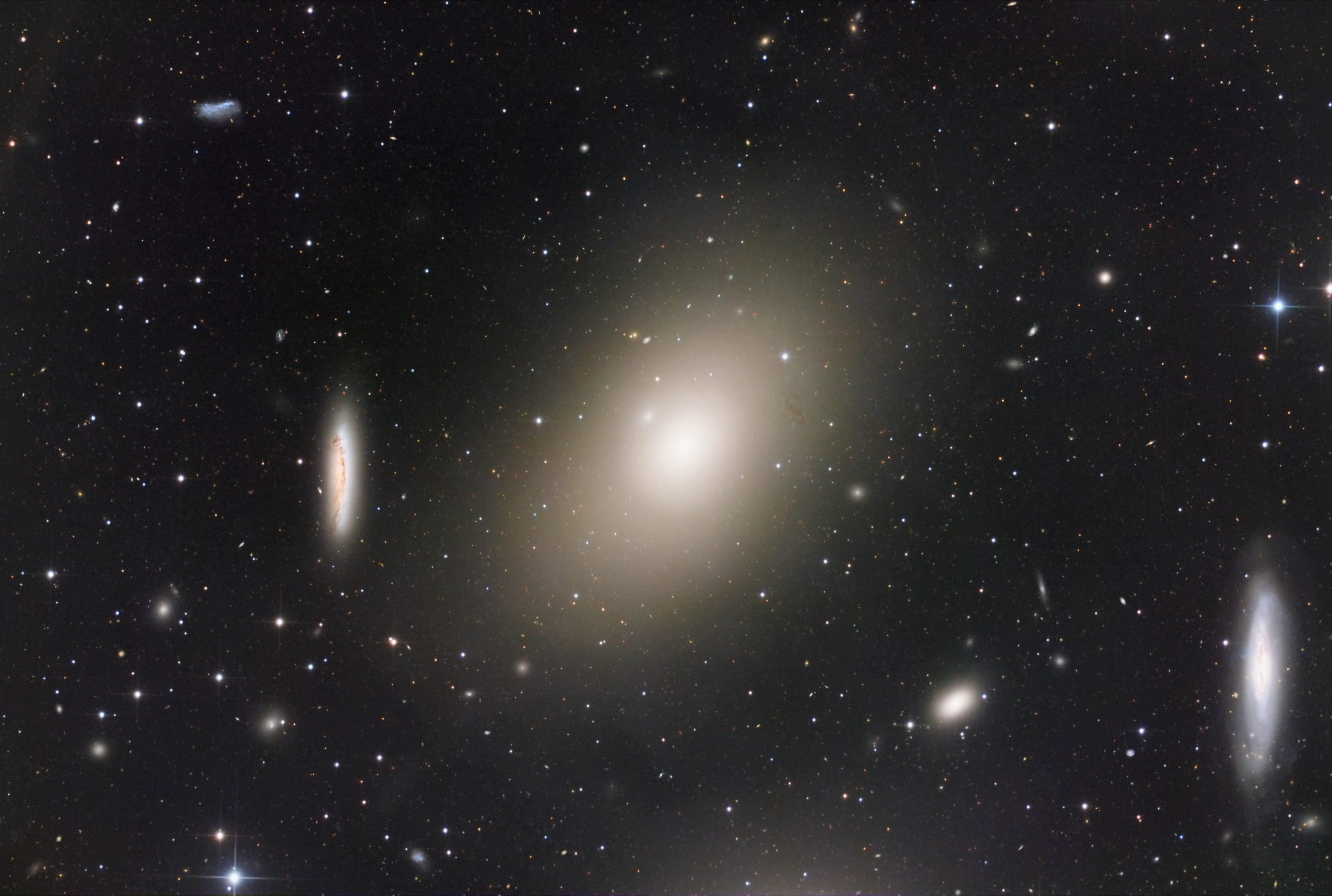
Messier 101 (M101), also known as the Pinwheel Galaxy, is a grand design spiral galaxy in the constellation of Ursa Major. Located nearby – just 23 Mly away from Earth, it is one of the largest galaxies in the sky. It is difficult to observe visually in any detail due to its low surface brightness, and generally requires a very dark sky to enjoy, even with NV devices. Being the brightest member of a loose galaxy group called the “M101 Group”, it is also one of the most well-studied galaxies in the sky. It provides a “unique laboratory” for studying the evolution of spiral galaxies that undergo tidal interactions (Linden et al. 2022).
The obvious asymmetrical morphology of M101 points to its violent past. One model suggests that approximately 200 Myr ago, a companion galaxy, NGC 5474, which also part of the M101 group, has grazed the M101’s outer disk, approaching within only ~ 10 kpc, triggering a strong gravitational response and disrupting the dynamical equilibrium of the galaxy. This explains the overall lop-sidedness of M101, its ~ 30 kpc-long North-East Plume, extending far beyond the image frame towards down-left, and the sharp western edge of the galaxy (Linden & Mihos 2022).
What is somewhat unexpected is that there are no obvious tidal tails that connect M101 to any of the smaller galaxies in the group that would point to a recent interaction. If the grazing encounter model is correct, M101 is currently in the state of a recovery from this collision, while the disruptor, NGC 5474, continues to move away on a loosely bound orbit. The disrupted material in M101 continues to mix azimuthally, and the NE Plume is falling back onto the galaxy, forming a distinct stellar stream.
Despite being one of the most visited galaxies by the astrophotographic community, M101 is quite a rare phenomenon in the Local Universe, in the sense of its large, > 5 magniude gap in the luminosity distribution of its satellite galaxies, which is supposed to be more uniform. This presents a challenge to the known models of galaxy formation. Recent simulations show that this configuration can still fit the standard LambdaCDM cosmological model, although only about 1 out of 1000 galaxies formed will display such a magnitude gap with its satellites. The gap itself can be explained by the recent accretion of bright satellite galaxies and is expected to be temporal, disappearing on timescales of a few Gyr (Zhang et al. 2021).
According to de Vacouleurs et al. (1991) – the morphological reference used in the NASA NED – M101 is of SAB(rs)cd morphological type, which signifies an intermediate, weak-bar spiral between normal and barred spirals, with a transitional subtype indicating the presence of weak ring-like structure. I am uncertain why a transitional (rs) designation was assigned, as spiral arms can be traced all the way to the center and it is difficult to find a pseudoring such as in, e.g., IC 239. HyperLeda database specifies a different SABc type based on a more recent reference. Both types are continued to be used throughout the recent literature.
This image was obtained with the A1 telescope installed at Alnitak Remote Observatories in Nerpio, Spain:
- PlaneWave CDK17 0.43 m f/6.8 Corrected Dall-Kirkham
- Software Bisque Paramount ME
- Moravian Instruments C3-61000 Pro, Back-Illuminated CMOS Camera
- Chroma 50 mm filters (LRGB, 5 nm narrowband)
- FLI CenterLine CL-1-14 12+2-position Dual Color Filter Wheel
- Optec Sagitta OAG Off-Axis Guider with ASI174MM Guide Camera
Processing software used: ACP DC-3, MaximDL Pro, TheSky X, DeepSkyStacker, PixInsight, RC Astro BlurXTerminator and NoiseXTerminator, GIMP.
REFERENCES
de Vacouleurs, G., de Vacouleurs, A., Corwin, H. G. Jr., et al. 1991, in Third Reference Catalogue of Bright Galaxies, Springer, New York, NY
Linden, S.T., Mihos, C. J. 2022, ApJ, 933, 33
Linden, S. T., Perez, G., Calzetti, D., et al. 2002, ApJ, 935, 166
Zhang, D., Luo, Y., Kang, X., Qu, H. 2001, MNRAS, 508, 1555


